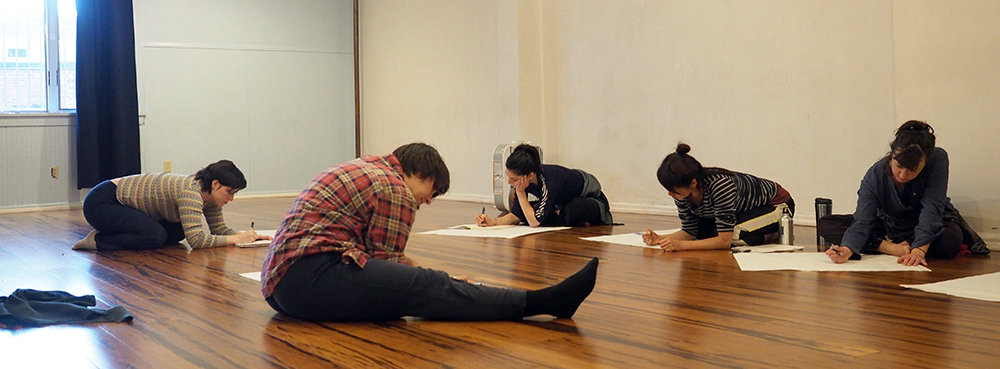WRITING FOR PERFORMANCE
BACKGROUND OF APPROACHES TO WRITING PERFORMANCE TEXTS
by Karinne

When I lead guided writing periods, and when I write solo, I often use a preliminary process to surround myself with resources I can place next to my computer or notepad that allow me to drop my eyes to the resource, grab the first thing I see, and feed it into the stream of what I’m writing. It allows me to write at speed, to surprise myself into improvising a text, and helps me bypass too much sitting and thinking about an exact word or idea (a working tempo I prefer to leave for later stages of revision). One effect of my coming to playwriting from a choreographic background is that I tend to think of theatrical experience equally in terms of space and time. Traditional dramatic writing tends to prioritize theatrical time — this leads to that — over space, for which I think it’s fair it hands over to the design team, and substitutes character as the pair to time. My ideas about time in narrative are also informed by choreographic thinking; I tend to embrace time structures for narrative that one might think of as musical or choreographic (emphasizing pattern or series) or, lately, as related to a mural that discards temporal perspective and includes a huge array of events that simultaneously occupy the picture plane. We don’t tend to talk about picture perspective in narrative terms, but it could usefully describe what also tends to be called realistic or naturalistic. I’m interested in writing that engages perspective differently, that multiplies perspectives, that roves, that equalizes foreground and background, or at least does away with their relative value and gets at theatrical experience by other routes. Map making has been a specific strategy for storytelling with this spatial, mural-related approach.
